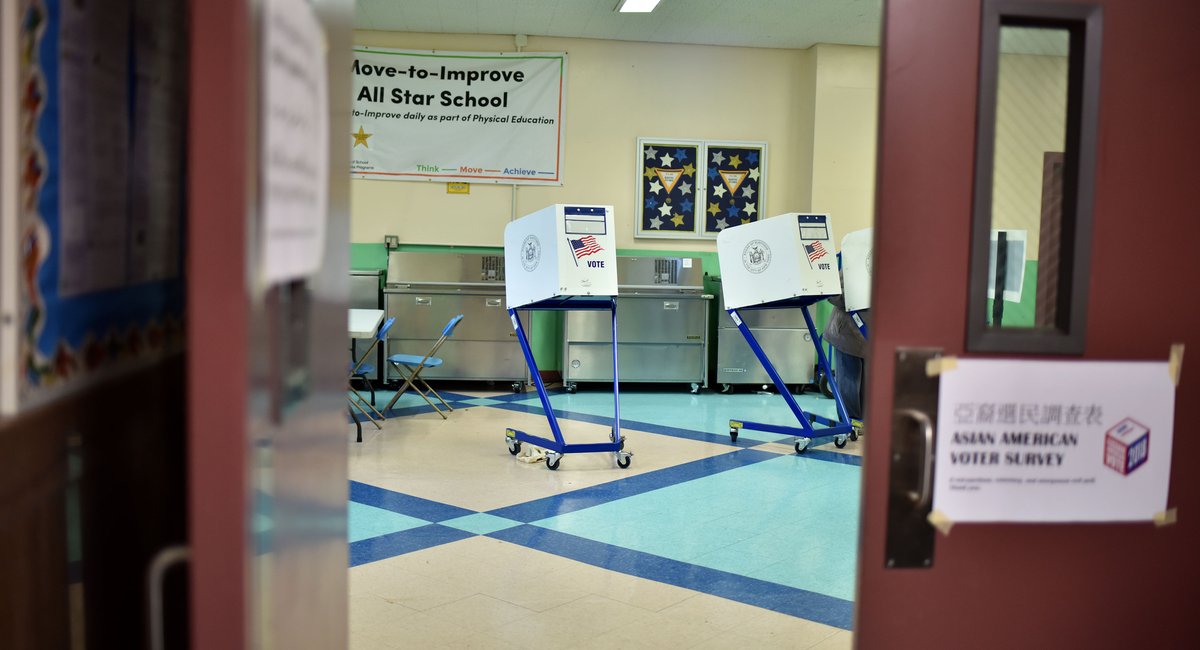Turnout in New York City’s local elections is notoriously low.
Now, voters who bother to show up at the polls will weigh in on a potential solution: whether to move local elections to even years.
The proposal, listed as question No. 6 on ballots, is a product of the New York City Charter Revision Commission empaneled by Mayor Eric Adams last year. The proposal asks whether to align city election and presidential election years to boost turnout.
There is a very significant gap between how many voters participate in even-year presidential elections — when nearly 60% of voters routinely turn out in the general — and local election years, when voters pick their mayor, public advocate, comptroller and city councilmembers.
Just 23% of voters cast ballots in the 2021 general election.
A yes vote supports moving city elections to even years, the first step in a multiyear process that would require reform of the state constitution. A no vote would keep federal and local elections separate, with the latter remaining in odd-numbered years.
Proponents of the measure point to other cities around the country that made the switch to even-year elections. Participation rates there more than doubled.
“When fewer than 1 in 4 New Yorkers is turning out to vote for the mayor of New York City, we have a major problem,” said Grace Rauh, the executive director of the good government group Citizens Union. “This is like an alarm going off when it comes to the health and strength of our democracy.”
Her organization has released multiple reports that found benefits to the switch to even-year elections, including to down-ballot races.
Opponents warn that making the change — intended to boost democratic participation — could actually have the opposite effect.
Paul Newell, an attorney and Democratic district leader on the Lower East Side, said the measure may have the unintended consequence of suppressing turnout in local primaries, which would still be held in a different month from the presidential primary. Local primaries, which are often the decisive contests in the city, are held in June. The presidential primaries in 2016 and 2020 were held in April.
Very few local races, with the exception of this year’s mayoral race, are effectively decided in the general election.
“You would have none of that presidential attention, bringing up turnout [in the primary],” Newell said on “The Brian Lehrer Show.”
He also said that even-year alignment would mean lengthy primary ballots for local offices and state and federal legislative races, which use different methods to choose candidates.
“Half the elections will be ranked-choice voting. Half of them will not be. It will be very confusing,” said Newell.
If the measure passes, it would still require a change to the state constitution before it could be enacted, a process that includes passing two successive legislative sessions before going before voters again as a statewide ballot measure. If it is adopted, there would be a year to transition to the new calendar.
State Sen. James Skoufis introduced a proposed constitutional amendment last year. A similar law shifting county elections to even-numbered years was already adopted by the Legislature.

